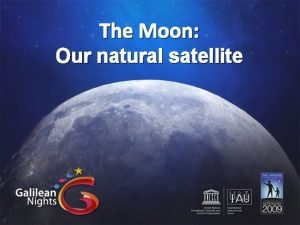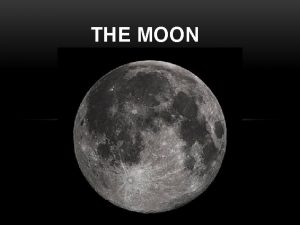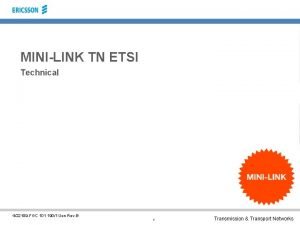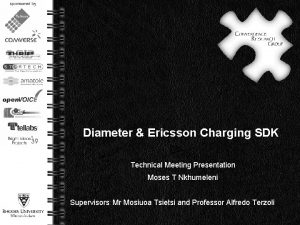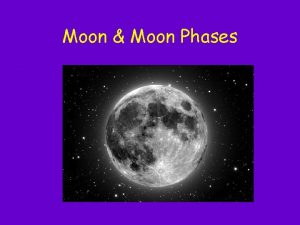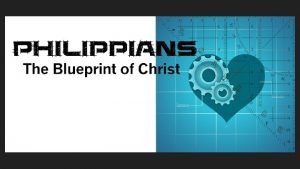Shooting for the Moon APRILLE JOY ERICSSON CHAPTER













- Slides: 13

Shooting for the Moon APRILLE JOY ERICSSON CHAPTER 18

Summary Aprille Joy Ericsson, an astronautical engineer, � Discusses some of the cutting-edge technologies involved in this ambitious goal. � Reveals the design challenge for this space mission in terms of its goal, cost, and date. � Explains concepts like resistance-free travel and a low pass maneuver the spacecraft will perform when landing on Mars. � Stresses the importance of minimizing the potential for failure by testing and evaluating system components before finalizing the design. � The editor’s note on “Rocket Science” describes how Newton’s third law applies to rocket propulsion.

Rubric � 100%; 5 items+ � 95%; 5 items � 85%; 4 items � 80%; 3 items � 75%; 2 items � 65%; 1 item � 60%; 0 item

Engine � An engine is a system that uses temperature differences to create differences in pressure.

How it works � On launch, fuel and liquid oxygen are pumped into the combustion chamber of the rocket where they combine and burn explosively. � The expanding gasses from the intense, continuous burning of fuel increase the pressure in the combustion chamber enormously. � The hot gasses from the burning fuel escape through a small opening, called a nozzle.

Newton’s Third Law of Motion �Says that every action has an equal and opposite reaction.

Thrust �Thrust is determined by the rate the mass is ejected from the nozzle, the velocity of the escaping gas, and the pressure at the nozzle exit.

Resistance �Resistance opposes movement. Every object is subject to resistance of some sort. �What examples can you think of?

Cosmic Rays �The atmosphere of our earth protects us from high- energy particles from space called cosmic rays.

Question 1 Question �Why is it important the Mars SCIM may bring dust from the Martian atmosphere back to Earth? Answer �The tiny pieces of dust could reveal secrets about the red planet’s past and future – including its potential to sustain life.

Question 2 Question �How will the engineers on Dr. Ericsson’s team test the spacecraft before it is launched? Answer �It will be tested in a vacuum chamber where pressure changes the aircraft will experience on the journey can be simulated.

Question 3 Question �What is Newton’s third law? Use it to explain how a rock engine propels a spacecraft into outer space. Answer �Every action has an equal and opposite reaction. �Thrusters will propel the space craft into outer space by pushing hot gasses out at a very high velocity. �According to Newton’s third law, the spacecraft will experience an equal and opposite force, propelling it upward into space

Question 4 Question � Why must engineers like Dr. Ericsson consider pressure differences when designing components such as the fuel tank? Explain in terms of fluid movement and pressure differences. Answer � Changes in pressure pose a serious problem because, in space, air pressure can be so low that it’s negligible. This causes problems for the fuel tank, which would expand as the spacecraft gained altitude, and possibly rupture in space. � The fuel tank must be able to adjust its internal pressure during launch, and the flow of liquid fuel into the combustion chamber must also be kept constant during launch.
 Aprille ericsson fun facts
Aprille ericsson fun facts If you want joy real joy wonderful joy
If you want joy real joy wonderful joy Joy to the world unspeakable joy
Joy to the world unspeakable joy Which moon phase occurs directly before a new moon
Which moon phase occurs directly before a new moon Which moon phase occurs directly before a new moon
Which moon phase occurs directly before a new moon Moon sister moon calendar
Moon sister moon calendar Home.hiwaay.net/ krcool/astro/moon/moon tides/
Home.hiwaay.net/ krcool/astro/moon/moon tides/ How many days for a moon cycle
How many days for a moon cycle Amm2p
Amm2p Historia telefonu
Historia telefonu Essjay ericsson portal
Essjay ericsson portal April ericsson
April ericsson Ericsson diameter sdk
Ericsson diameter sdk Cpp ericsson
Cpp ericsson





